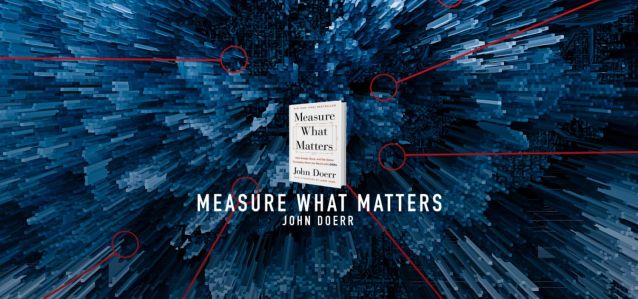Gates Notes: Management tips from a brilliant business leader

In the early days of Microsoft, I felt pretty confident about my coding skills, but I had a lot to learn about project management. This became abundantly clear after an incident in 1978, when I told Intel—a really important customer—that we would deliver them a version of Microsoft BASIC in four weeks. They thought I was crazy to promise it that fast, and it turned out that they were right. We were two weeks late.
As it happens, Intel employed someone who would end up helping me improve my management skills: Andy Grove. A precise, hard-driving guy, Andy oversaw their strategy and operations, and he championed the idea of management by objective. Andy and I became friendly over the years, I studied several of the business books he wrote early on, and Microsoft adopted some of the methods that Intel used. I consider Andy one of the great business leaders of the 20th century.
Andy’s ideas are a basis for the management system called OKRs (Objectives and Key Results) developed by John Doerr, a venture capitalist and a frequent business partner of mine. In his new book, Measure What Matters: How Google, Bono, and the Gates Foundation Rock the World With OKRs, John explains how OKRs work and shows how you can apply them in all sorts of situations.
I’d recommend John’s book for anyone interested in becoming a better manager (and I’d say that even if I hadn’t been interviewed for a super-nice chapter about the Gates Foundation). In the excerpt below, John tells the inside story of how Andy inspired the idea of OKRs.
Excerpt from**Measure What Matters By John Doerr**
Intel was Grove’s laboratory for management innovation. He loved to teach, and the company reaped the benefits. A few days after getting hired, I received a coveted invitation to Intel’s Organization, Philosophy, and Economics course, known as iOPEC, a seminar on Intel strategy and operations. Resident professor: Dr. Andy Grove.
In the space of an hour, Grove traced the company’s history, year by year. He summarized Intel’s core pursuits: a profit margin twice the industry norm, market leadership in any product line it entered, the creation of “challenging jobs” and “growth opportunities” for employees. Fair enough, I thought, though I’d heard similar things at business school.
Then he said something that left a lasting impression on me. He referenced his previous company, Fairchild, where he’d first met Robert Noyce and Gordon Moore and went on to blaze a trail in silicon wafer research. Fairchild was the industry’s gold standard, but it had one great flaw: a lack of “achievement orientation.”
“Expertise was very much valued there,” Andy explained. “That is why people got hired. That’s why people got promoted. Their effectiveness at translating that knowledge into actual results was kind of shrugged off.” At Intel, he went on, “we tend to be exactly the opposite. It almost doesn’t matter what you know. It’s what you can do with whatever you know or can acquire and actually accomplish [that] tends to be valued here.” Hence the company’s slogan: “Intel delivers.”
It almost doesn’t matter what you know… To claim that knowledge was secondary and execution all-important—well, I wouldn’t learn that at Harvard. I found the proposition thrilling, a real-world affirmation of accomplishment over credentials. But Grove wasn’t finished, and he had saved the best for last. Over a few closing minutes, he outlined a system he’d begun to install in 1971, when Intel was three years old. It was my first exposure to the art of formal goal setting. I was mesmerized.
A few unvarnished excerpts, straight from the father of OKRs:
Now, the two key phrases…are objectives and the key result. And they match the two purposes. The objective is the direction: “We want to dominate the mid-range microcomputer component business.” That’s an objective. That’s where we’re going to go. Key results for this quarter: “Win ten new designs for the 8085” is one key result. It’s a milestone. The two are not the same…
The key result has to be measurable. But at the end you can look, and without any arguments: Did I do that or did I not do it? Yes? No? Simple. No judgments in it.
Now, did we dominate the mid-range microcomputer business? That’s for us to argue in the years to come, but over the next quarter we’ll know whether we’ve won ten new designs or not.
It was a “very, very simple system,” Grove said, knowing simplicity was catnip to an audience of engineers. On its face, the conception seemed logical, commonsensical—and inspiring. Against the stale management orthodoxy of the period, Grove had created something fresh and original. Strictly speaking, however, his “objectives and key results” did not spring from the void. The process had a precursor. In finding his way, Grove had followed the trail of a legendary, Vienna-born gadfly, the first great “modern” business management thinker: Peter Drucker.
Excerpted from Measure What Matters: How Google, Bono and the Gates Foundation Rock the Work with OKRs by John Doerr, in agreement with Portfolio, an imprint of Penguin Publishing Group, a division of Penguin Random House LLC. Copyright © 2018 by Bennet Group LLC.